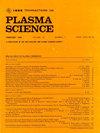Investigation of a New De-Icing Method for Wind Turbine Blades Based on Shock Waves Generated by Pulsed Liquid Discharges
IF 1.3
4区 物理与天体物理
Q3 PHYSICS, FLUIDS & PLASMAS
引用次数: 0
Abstract
In response to climate change, an increasing number of countries are setting carbon-neutral and net-zero emission targets. Clean energy is receiving wider attention. Many wind power stations are located in high mountains with abundant wind resources, and their blades have serious ice-covering problems in winter. Currently, there are no widely available solutions. In order to solve this problem, this article proposes a new de-icing method based on shock waves generated by pulsed liquid discharges. This method has never been proposed and experimented with before. The advantage of this method is energy efficiency, requiring only a tiny amount of energy to break up the ice. The structure of the new de-icing device was first designed and tested with liquid discharges. It was verified with unsecured nails that the shock wave generated by the pulsed liquid discharges could be transmitted to the outer surface of the blades. Then, the de-icing experiments were carried out in different blade arrangement directions to confirm the effectiveness of the new de-icing method. Finally, the propagation of the shock wave after its generation with its resulting elastic microdeformation process of the blade is calculated. This study provides a new solution idea for the ice-covering problem of wind turbine blade, which is of great significance to the sustainable development of human society.求助全文
约1分钟内获得全文
求助全文
来源期刊

IEEE Transactions on Plasma Science
物理-物理:流体与等离子体
CiteScore
3.00
自引率
20.00%
发文量
538
审稿时长
3.8 months
期刊介绍:
The scope covers all aspects of the theory and application of plasma science. It includes the following areas: magnetohydrodynamics; thermionics and plasma diodes; basic plasma phenomena; gaseous electronics; microwave/plasma interaction; electron, ion, and plasma sources; space plasmas; intense electron and ion beams; laser-plasma interactions; plasma diagnostics; plasma chemistry and processing; solid-state plasmas; plasma heating; plasma for controlled fusion research; high energy density plasmas; industrial/commercial applications of plasma physics; plasma waves and instabilities; and high power microwave and submillimeter wave generation.
 求助内容:
求助内容: 应助结果提醒方式:
应助结果提醒方式:


